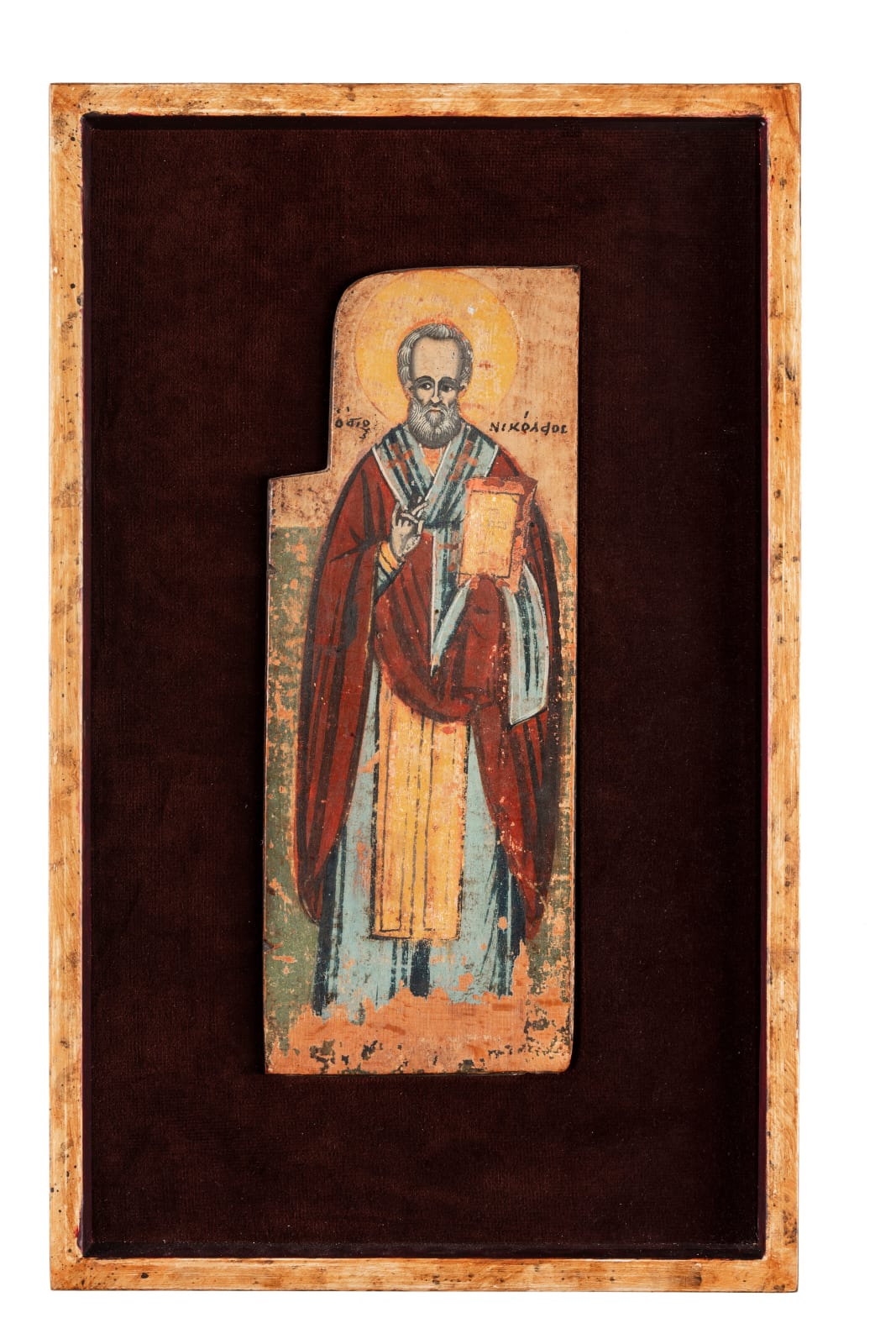Triptych Door with Saint Nicholas, circa 1700
Inscription in Greek: Ἅγιος Νικόλαος, Hagios Nikolaos
Feast Day: 6th of December (Julian calendar).
Saint Nicholas is depicted full length, wearing the traditional garment of an Orthodox bishop. He holds a gospel in his right hand and raises his left in blessing. Saint Nicholas is the most widely revered saint in Orthodoxy. According to scholarship his status in popular Orthodoxy is ‘second only to the Virgin’.[1] The Russians have a saying 'If anything happens to God, we have always got St Nicholas'. For six hundred years, Saint Nicholas was little known until, many centuries after his death, his cult arose in the 9th century and was greatly developed in Bari where his relics were taken by Genoese merchants following the Crusades in 1084.[2] The acquisition of the relics bestowed great status on the city, known ever since as ‘the city of Saint Nicholas’.
This is the wing of what was once a triptych showing Saint Nicholas. Triptychs painted on panels of Beech or Alder were common in many Slavic countries across the Balkans and especially in Bulgaria, where this panel was likely created.[3]
[1] The Oxford Dictionary of Byzantium Kazhdan ed., 1991, Vol 2, p. 1469
[2] Dawn Marie Hayes, The Cult of St Nicholas of Myra in Norman Bari c. 1071 – c. 1111 The Journal of Ecclesiastical History , Volume 67 , Issue 3 , July 2016 , pp. 492 - 512 DOI: https://doi.org/10.1017/S0022046915003371
[3] Y. Pyatnitsky in Athos: Monastic Life on the Holy Mountain, (Helsinki, Helsinki City Art Museum, 2005), p. 238
Provenance
Icons, Temple Gallery, London, December 1966-January 1967, Catalogue no. 56The Estate of the late Roger Peers (1932-2023), Curator of the Dorset County Museum between 1959 and 1992

